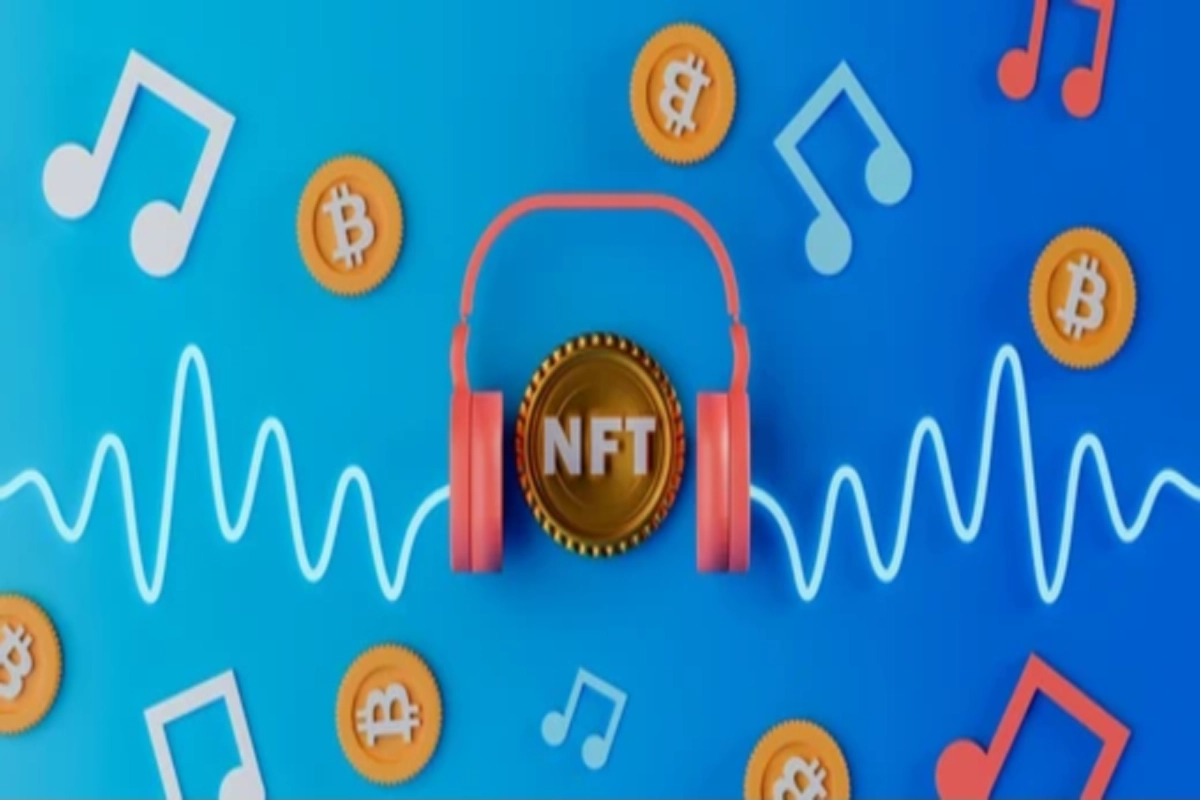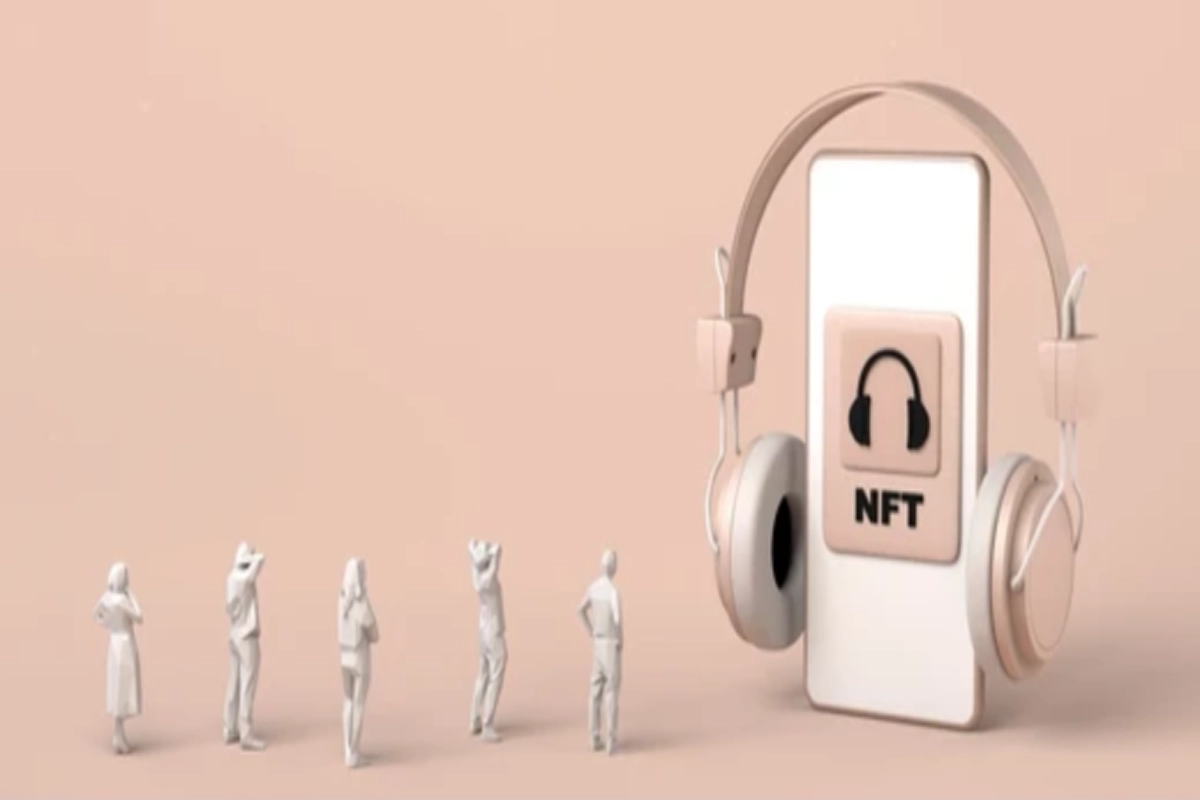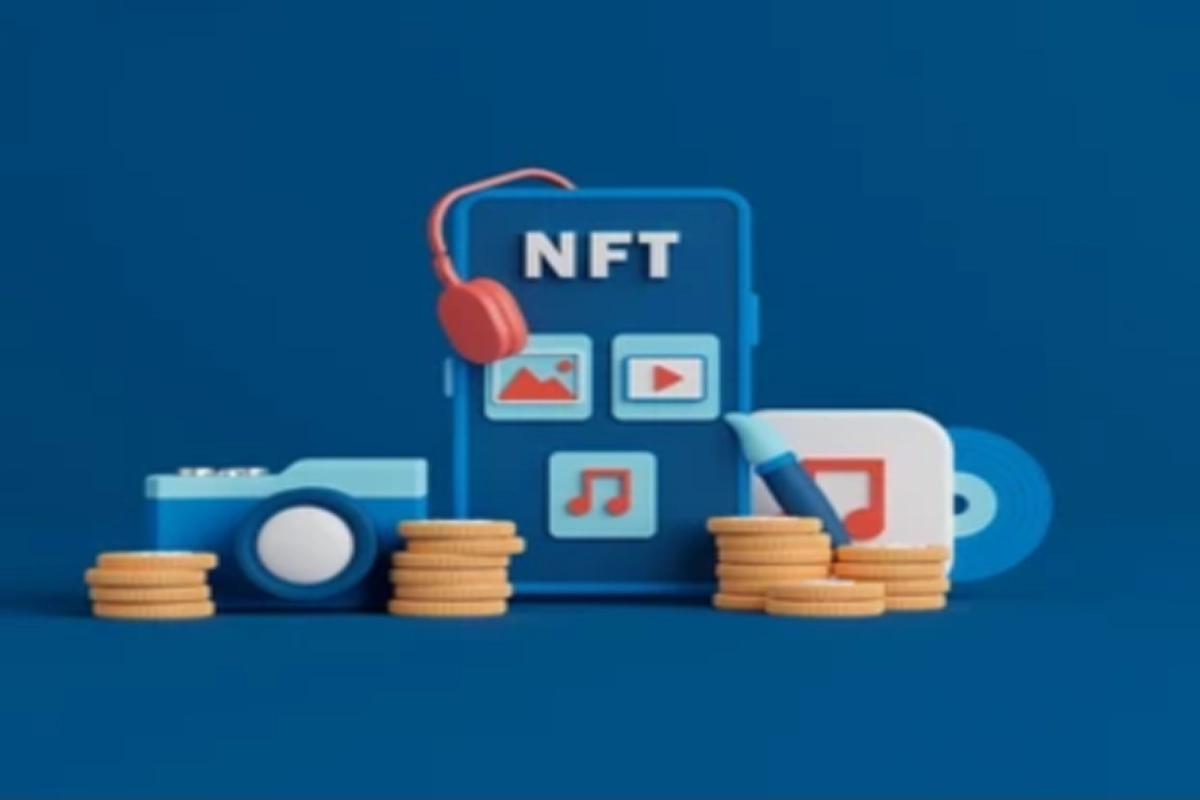What is a Music NFT? How To Buy & Sell Them
NFTs are revolutionizing the world of art, and music is no exception. For instance, musicians such as Grimes and DJ 3Lau have already raised millions of dollars on the NFT marketplace by releasing never-before-seen music videos and unreleased music. That said, let’s dive into the world of NFTs to understand how to sell music as an NFT, as well as how to buy them.
What is an NFT?
NFT stands for non-fungible token. It is a unique digital asset stored on the blockchain. For instance, this asset can be a song, piece of artwork, trading card, or virtual fashion. Nonetheless, all NFTs stored on the blockchain are unique and one-of-a-kind collectible items. They cannot be faked, copied, or deleted, as each NFT is cryptographically encrypted. Therefore, only one person can own the asset. Additionally, due to their one-of-a-kind nature, NFTs cannot be traded.

Let’s consider the following analogy to understand what an NFT is. Suppose you want to buy a Da Vinci painting. You could buy a print copy for a few bucks or the original painting itself, which is more valuable as it is a one-of-a-kind collectible artwork. Following the same logical pattern, buying an NFT is like buying the original painting digitally. On the other hand, buying a cheap copy is like taking a screenshot of the artwork – it is not the original painting. In addition, similar to the unique Da Vinci painting, the price of an NFT is likely to increase in value over time, too, as it is a collectible.
Brief Definitions:
- Blockchain: Blockchain is a system of recording information and transactions made in cryptocurrency. It is difficult and impossible to change, hack, or cheat the system as it is linked to a peer-to-peer network.
- Peer-to-peer network: A peer-to-peer network is a group of interconnected computers that exchange digital assets between individual parties without the involvement or the intermediary of a central authority.
- Decentralized network: A decentralized network distributes information-processing workloads across multiple devices instead of relying on a single central server. Blockchain is used in a decentralized peer-to-peer network to prevent a single person or group from monopolizing control. As a result, decentralized networks arguably offer more accessibility.
- Smart contracts: A smart contract is a self-executing contract that automates transactions on a blockchain in response to meeting certain conditions, such as payment or service delivery. The terms of the agreement between buyer and seller in a smart contract are directly written into lines of code. The goal of a smart contract is to simplify trade between anonymous parties without a centralized intermediary.
- Staking: Staking refers to depositing your cryptocurrencies or NFTs in a blockchain network to receive rewards. The asset that is staked is used to verify transactions on the blockchain. Like earning interest on your money at a bank, individuals who stake their assets earn rewards the longer their assets are staked.
What is NFT Music?
Music NFT is a unique and digital musical work, such as a song or music video. The music is transformed into an NFT by adding it to a blockchain like Ethereum. This blockchain establishes a peer-to-peer network, which allows the exchange of digital assets without the involvement of a central authority. A network that doesn’t use a central authority is called a decentralized network. It uses smart contracts to manage transactions between participants. As a result, music NFT can be purchased online and held digitally by the owner. However, this doesn’t mean other fans cannot enjoy the music. Instead, it means that the buyer is the sole owner of the digital asset.

In addition, the owner can resell the NFT music to another bidder and make a profit. As a result, the creator earns royalties every time a work is resold. That said, the leading platforms for NFT royalties are Royal and Opulous. For instance, Royal allows the artists to co-own the music with their fans, which means that both the artist and the fan earn royalties every time a work is sold. On the other hand, artists on Opulous earn royalties from their work by staking it on the platform and making a share of the platform’s transaction fees.
One of the main reasons why music NFT is gaining popularity is because any musician can upload their songs to an NFT marketplace and earn royalties with no middlemen, contracts, or fees. Also, unlike the traditional music industry, all the profit is enjoyed solely by the artist without giving a share to the producers, publishers, and record labels.
Examples of NFTs in Music
Many artists, such as Kings of Leon, Jacques Greene, and Tory Lanez, have turned to the NFT marketplace to sell their music. However, the most jaw-dropping figure comes from DJ 3Lau and Grimes, who sold their music for millions of dollars.
DJ 3Lau was the first artist to tokenize an entire album and sell it on the music NFT marketplace. He auctioned 33 NFTs or 33 copies of his Ultraviolet Vinyl NFT album featuring unreleased music. All copies of the NFT album were sold within 48 hours, bringing the artist $11 million in profits. In addition, one of the albums contained a custom NFT song, which was sold for $3,666,666. After his success, the DJ started his own music NFT platform called royal.io, which also offers music streaming services.
Similarly, Grimes auctioned 10 NFTs, including unseen images and short music videos, for $6 million. The most expensive asset, “Death of the Old,” was sold for $388,938.
How to Sell Music as an NFT
Even though price tags on NFTs sold by celebrities can reach millions of dollars, those sold by beginners usually cost a couple of bucks. Nonetheless, it can be a great way to spread awareness about your work and build a relationship with your fanbase, with the possibility of earning money in the long run as your music receives more recognition. That said, follow these five steps to sell your music NFT:
Step One: Create Your Music NFT
Once you have an idea of the music you want to produce and sell, there are three ways to get it done.
- Create a live version of your song
- Record a studio-produced track
- Make a music video
No matter which option you choose, be ready to dedicate several hours to working with computer files and different recording programs to ensure quality. Remember, bad NFTs don’t make as much money as the better-produced version. Also, ensure you are creating your original music to avoid copyright infringement.
Step Two: Download a Crypto Wallet
A crypto wallet is a storage for your NFTs and a payment method to cover the gas fees. The gas fee is a blockchain transaction fee. The fee is paid to network validators who secure, validate, and verify blockchain transactions. For that reason, you need to make sure you have cryptocurrency in your wallet before you start creating or minting NFTs.
There are multiple crypto wallets on the music NFT market. The most popular ones include Metamask, TrustWallet, CoinBase, and Binance. Since most NFTs are based on the Ethereum blockchain, you need to purchase a utility token called Ether or ETH to list and sell your music on an NFT marketplace. You can buy ETH with a credit card directly from these wallets by creating an account through their website or app.
Step Three: Choose an NFT Marketplace
An NFT marketplace is a digital platform for storing, displaying, buying, and selling NFTs. There are several NFT marketplaces, and each offers services ranging from creation to sales. However, the music NFT marketplace leaders are Royal, Opulous, and OpenSea. The latter allows creators to mint their NFTs for no gas fees. Another popular user-friendly marketplace for NFT music is Crypto.
Choosing a platform to list your NFT is a matter of personal choice. No matter which option you choose, creating an account requires the same steps. First, you need to connect your crypto wallet to the platform. Then, you can customize your profile and add your nickname, email, photo, and other personal details.
Step Four: List Your Music NFT for Sale
Your chosen platform should have an area dedicated to music NFTs. Next, select the NFT you would like to sell from your wallet. Here are the four steps to list your music NFT for sale:
- Create your collection: Even if you have created a single NFT, you must create a collection. This is where you will store your files and keep them organized.
- Mint: Minting is the process of converting your digital files into digital assets stored on the blockchain as part of your collection.
- Upload: Now that you have minted your files, it is time to name and upload your NFTs. Remember, you cannot change the names once you have uploaded them.
- Link: Add links associated with your NFT collection, such as your website and social media profiles, so buyers can access your other work.
Step Five: Set Your Price and Earn Money Selling Your Music NFT
Before selling your music NFT, you need to decide how many you want to sell. For instance, you can sell a single copy that gives one person all NFT music royalties and ownership or split it into several tokens to spread the wealth.
Once you have decided on the quantity, you must come up with the listing price for the NFT. You have three options when it comes to setting the price:
- Open a bid and let the buyer who places the highest bid get the music NFT,
- Set a reserve price, and the highest bidder that meets it buys the music NFT,
- Set a fixed price and let the buyer purchase the music NFT without bidding.
Finally, set your NFTs for sale and earn money. Leveraging the power of social media statistics, remember to strategically promote your music NFTs on different social media platforms to tap into their vast user bases and increase your chances of getting discovered by investors.
How to Buy Music NFTs

So far, you know how to sell music as an NFT, but let’s also talk about how you can get your hands on one. Here’s what you need to know if you’re ready to buy music NFT from your favorite artists:
- Find a platform that sells music NFTs: As mentioned previously, there are different platforms where you can trade music NFTs, such as Opulous, Royal, and OpenSea.
- Download a Crypto Wallet: Once you have decided on the platform of your choice, download a crypto wallet to hold your NFTs. Every wallet has its own address – a series of characters that function as a bank account number used to send and receive cryptocurrency on the blockchain.
- Exchange cash for cryptocurrency: You can use your credit card to purchase crypto through your wallet, like CoinBase and Binance. Remember that Ether is the cryptocurrency used on the Ethereum blockchain, where most NFTs are stored.
Once you have found music that you would like to purchase, remember to check the different types of sales:
- The highest bidder gets the NFT,
- The buyer who meets the reserve price buys the music,
- The seller has a fixed price that you can purchase immediately.
When the seller offers a fixed price, you can try to get the item at a lower price by making an offer and suggesting your own price.
Also note that when you have purchased an NFT, it will not instantaneously be transferred to you. It may take minutes, hours, or days for the transition to take place.
Conclusion
Buying and selling NFT music generally requires the same steps: downloading a crypto wallet, choosing a marketplace, and exchanging cash for cryptocurrency. Nonetheless, blockchain technology is helping build a stronger relationship between artists and fans, allowing them to own a piece of their creation. In addition, by financially supporting their favorite artists, music NFT investors can also benefit from the transaction by earning royalties and selling it for a higher price in the future.
Try our real-time predictive modeling engine and create your first custom model in five minutes – no coding necessary!
- Fully operational AI with automated model building and deployment
- Data preprocessing and analysis tools
- Custom modeling solutions
- Actionable analytics
- A personalized approach to real-time decision making
Table of Contents
- What is an NFT?
- What is NFT Music?
- Examples of NFTs in Music
- How to Sell Music as an NFT
- Step One: Create Your Music NFT
- Step Two: Download a Crypto Wallet
- Step Three: Choose an NFT Marketplace
- Step Four: List Your Music NFT for Sale
- Step Five: Set Your Price and Earn Money Selling Your Music NFT
- How to Buy Music NFTs
- Conclusion



